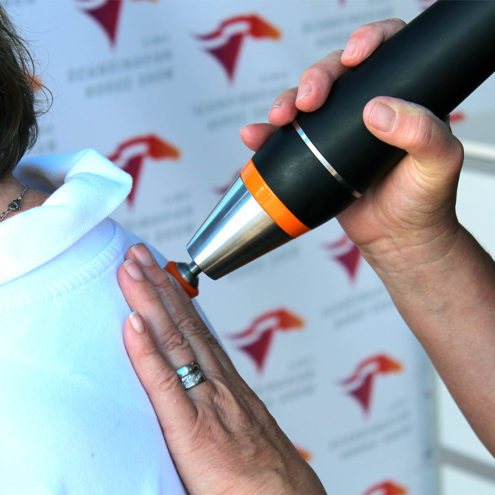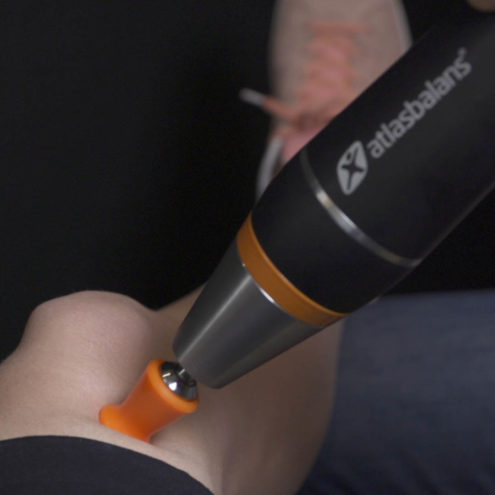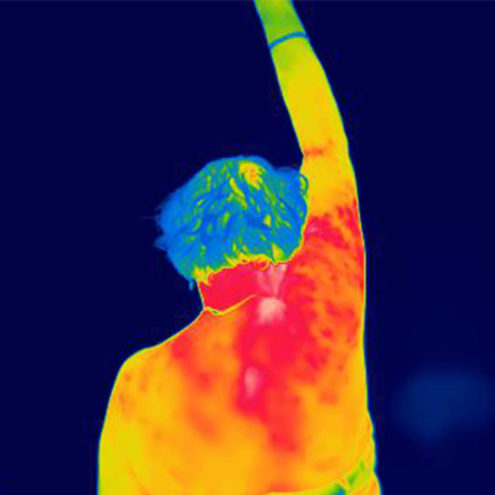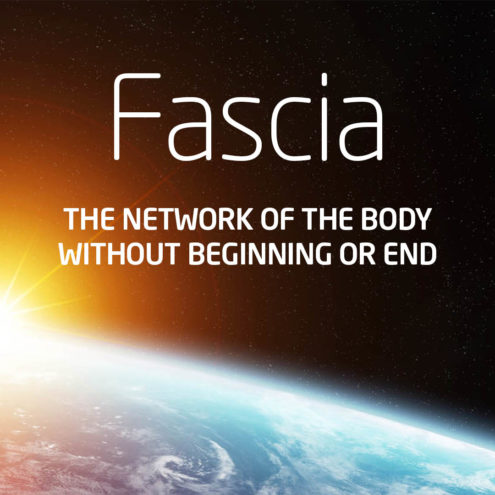Best Ways to Relieve Migraines!

Migraine is an intense and often disabling pain that can have a major impact on life. To effectively manage migraines, it is important to understand how the health of the fascia plays a role and what methods can relieve symptoms.
Understanding Migraine and Fascia
Migraines can be experienced as a pulsating or throbbing pain, often on one side of the head or in the form of so-called eye migraines. It’s painful and can paralyze you in a flash. Fascia, the network of connective tissue that surrounds and permeates our muscles and organs, can contribute to migraine through its effect on muscle tension and nerve function. Unhealthy fascia can exacerbate migraine symptoms by creating pressure points and affecting nerve pathways.
Extended Methods for Relieving Migraine from a Fascia Perspective
Cold
Cold can relieve migraines. When cold is applied to the neck or forehead, it can relieve swelling and pain in the fascia and muscles.
Caffeine
Caffeine, in moderate amounts, may offer temporary relief from migraines by narrowing blood vessels and reducing blood flow. This can reduce the pressure in the head and thus the pain. In addition, caffeine can help some migraine medications to be absorbed more quickly. However, it is important to be aware that excessive consumption of caffeine can lead to increased tension in the fascia and potentially worsen symptoms over time.
Dark and quiet
Seeking a dark and quiet environment is an important strategy for managing migraines. Bright lights and loud noises. Reducing sensory overstimulation and favors to relaxation and reduced tension in fascia and muscles.
Training
Regular exercise is crucial for migraine prevention. Exercise releases endorphins, the body’s natural pain relievers, and reduces stress.
Electrolytes
Electrolytes play an important role in regulating nerve and muscle functions and can have a relaxing effect on the fascia. For people with migraine, electrolytes can help reduce the frequency and intensity of attacks by stabilizing the nervous system and reducing tension in the fascia. Choose foods with a high nutrient density to get enough electrolytes such as meat, nuts, vegetables and fruit.
Prioritize sleep
Good quality sleep is essential to prevent and reduce fascial tension. Maintaining and ensuring adequate sleep can reduce the frequency of migraine attacks.
Yoga
Practicing yoga can be an option for managing migraines. Yoga often combines low-intensity exercise with relaxation and stress management. Yoga helps to stretch and soften the fascia, so tension is reduced and blood flow is improved.
Foods to avoid for migraines
Certain foods can trigger migraines in sensitive individuals. It is important to observe how your body reacts to certain foods and avoid those that cause attacks. Common triggers include:
Red wine and alcoholic beverages
Aged cheese and cured meats
Foods containing monosodium glutamate (MSG)
Chocolate and caffeinated drinks
Artificial sweeteners like aspartame
Some fruits such as citrus fruits and bananas
Understanding how fascia and migraine are related, and using these methods, can be crucial to managing and preventing attacks. By combining these strategies with a healthy lifestyle, you can find relief and improve your quality of life.
Get to know your triggers
Understanding and managing personal triggers is a critical aspect of controlling migraine. The fascia, which is sensitive to different types of stimuli, can react to and be thickened by a variety of triggers. These triggers can vary widely from person to person and can include specific foods, environmental factors, emotional stress, and even changes in weather or barometric pressure.
Food triggers
Certain foods are known to potentially trigger migraines. Examples of such foods include chocolate, aged cheese, processed meats containing nitrates, and foods with high levels of monosodium glutamate (MSG). These substances can affect the fascia by causing inflammation or by affecting the blood vessels, which in turn can lead to migraines. Keeping a food diary can help identify specific foods that trigger migraines.
Environmental factors
Environmental factors such as bright lights, loud noises, and strong smells can also be triggers. These sensory stimuli can lead to an overstimulation of the nervous system, which can affect the fascia by increasing muscle tension and causing headaches. Avoiding these environments or using aids such as sunglasses or earplugs can be effective.
Emotional stress
Stress is one of the significant factors for migraine. Stress can lead to tension in the muscle fascia and cause contractions, which can contribute to migraines. Stress management methods, such as mindfulness, meditation, and deep breathing exercises, can be particularly effective in reducing the frequency and intensity of migraine attacks.
Hormonal changes
For women, hormonal changes can be a trigger for migraine. These changes can affect the fascia by altering the body’s pain sensitivity and inflammatory response. Being aware of patterns of migraine attacks in relation to the menstrual cycle can be useful.
Also read: Hormonal migraine
Weather and barometric pressure
Changes in weather and barometric pressure are known to trigger migraines in some individuals. These changes can affect the fascia by affecting circulation and causing fluid retention, which can contribute to migraine.
Identifying and managing these triggers is an important part of managing migraine. It is important to note that triggers can vary greatly between individuals, and what is a trigger for one person may not be for another. Understanding and adapting to these personal triggers, while maintaining a healthy lifestyle and taking care of one’s fascia, can lead to a significant reduction in migraine attacks and their intensity.
 Search
Search


































